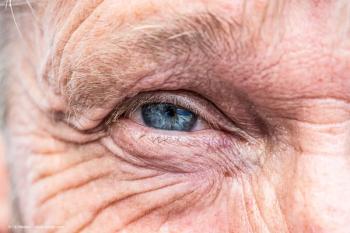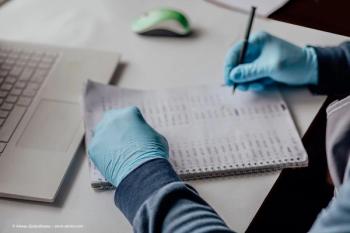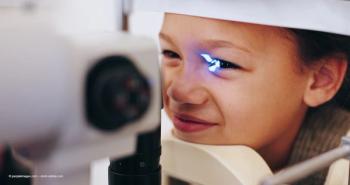
Eichenbaum Acorns: A leadership conversation with Rishi P. Singh, MD, FASRS, on advancing CME
Behind the scenes of building impactful educational platforms in retina care
Welcome to “Eichenbaum Acorns,” an editorially independent series powered by Modern Retina® and hosted by David A. Eichenbaum, MD, FASRS, partner and director of research at Retina Vitreous Associates of Florida in Tampa Bay. This Q&A-style article and podcast series explores the overlooked corners of the retina specialist profession through candid conversations with thought leaders. Eichenbaum is the German translation for oak tree, and the aim of this series is to plant acorns of insight that grow into oaks of understanding.
In this inaugural installment, Eichenbaum sits down with Rishi P. Singh, MD, FASRS, to unpack the art and strategy behind building enduring continuing medical education (CME) programs. Singh was recently named chair of the Department of Ophthalmology at Mass General Brigham in Boston, Massachusetts, effective November 10, 2025. He was previously vice president and chief medical officer, Cleveland Clinic Martin North and South Hospitals, and professor of ophthalmology at Cleveland Clinic Lerner College of Medicine in Cleveland, Ohio.
Note: Transcript edited lightly for clarity and length.
David Eichenbaum, MD: I’m excited to launch “Eichenbaum Acorns” with my great friend, Dr. Rishi Singh. Rishi, welcome!
Rishi P. Singh, MD, FASRS: Thanks for having me, David.
Eichenbaum: It’s a pleasure. The purpose of this series is to highlight aspects of retina we don’t often hear about. For those in the field, your work organizing highly successful CME meetings is widely recognized. Although a few people are involved in this space, no one is more visible than you. Let’s begin with an overview of the meetings you’ve led or are developing. Walk us through the “Rishi Singh CME Catalog.”
Singh: Absolutely. I co-direct the Hawaiian Eye Retina meeting with Judy Kim, MD, and I’ve participated in the OSN New York Retina meeting alongside Yasha Modi, MD, Vaidehi Dedania, MD, and Talia Kaden, MD. I’m also launching the Sunshine Eye and Retina meeting in Florida next year—where you’ll be speaking along with Priya Vakharia, MD, and Jorge Fortun, MD, who’s serving as Program Chair.
One of the earliest and most significant projects I started was the RWC in 2019. That was the real beginning of all this.
Eichenbaum: What inspired you? What made you think, “I’m going to bring together retina specialists from all over the world to Fort Lauderdale in the winter”?
Singh: I’ve always been an educator at heart—teaching residents, fellows, and medical students. Even in my administrative role as president of our hospital in Florida, I continue mentoring students in Ohio and guiding early-career professionals.
What sparked RWC was the realization that there’s incredible retina work happening globally. In the US, we often see ourselves as the pinnacle of medical care, but many innovative drugs and devices are developed and used abroad first. I wanted to create a platform that would bring those global insights to a US audience. International meetings had always offered those “aha” moments for me, and I wanted to replicate that experience here.
The goal was to unify global retina societies—Brazil, the Middle East, ASRS—and create 1 congress where diverse perspectives could be shared. The congress model exists in other fields like oncology, but it was new for retina. We launched with 175 speakers from 47 countries. It’s only grown since.
Eichenbaum: It was an ambitious vision—and you made it a reality. From the start, it was impressive. And as of the latest meeting, it’s grown 25% to 50% by nearly any metric. That’s a massive undertaking. How did you move from concept to execution? This couldn’t have been done alone.
Singh: Exactly—it’s impossible to do this alone. One of life’s key lessons is that you’re always better with partners. In medicine, we often compete rather than collaborate early on, but I’ve come to deeply appreciate the value of teamwork.
Early on, the concept gained support from key partners who helped manage logistics, marketing, and sponsorships, while I focused on the science and curriculum.
Eichenbaum: It’s a great reminder that these meetings succeed thanks to partnerships—not just with physicians, but with creative professionals and educators who aren’t retina specialists.
Singh: One of the most rewarding aspects is giving new speakers a platform—people from underrepresented regions or early in their careers. Many organizations struggle to incorporate fresh voices. We’ve prioritized diversifying our programs to feature people who may never have spoken on a US podium before. That keeps the content dynamic and engaging, and it builds the next generation of leaders.
Eichenbaum: You’ve done that globally and domestically. You mentioned Priya, Yasha, Talia—all younger colleagues. You helped give many in other countries their first major US speaking opportunity at RWC. It’s incredibly meaningful to see people flourish because of those opportunities.
Singh: For me, nothing is more fulfilling than seeing someone I’ve mentored go on to make a major impact. Whether it’s someone I trained or worked with, their success is the most gratifying outcome. That legacy—of inspiring others—is one of the most valuable parts of what we do.
Eichenbaum: I agree. It’s a privilege to see people we’ve supported thrive—and it’s a joy to collaborate with them as they grow.
Let’s shift gears to another meeting: Hawaiian Eye. I remember it vividly from my training days when mentors like Elias Reichel would go every January. I used to dream of attending while freezing in Boston. Years later, I joined the faculty. How did you become involved in that legacy meeting?
Singh: I started as an attendee and was eager to contribute. I remember calling the meeting director, and pitching 5 topics. I told him I’d be happy to get even 1 slot just to be part of it. The first year, I presented to 4 people. I thought that was the end of it! But I must’ve done something right because I was invited back the next year—and again after that.
Eventually, I was invited to take on a leadership role. I think they valued my passion, approachability, and willingness to collaborate. That openness makes a big difference, especially in CME.
Eichenbaum: That’s great advice—especially for early-career professionals. Be the “yes” person. Show up. Be responsive and easy to work with. It goes a long way.
Singh: Absolutely. Whether you’re working with a pharma company, a CME provider, or anyone else, being accessible, friendly, and reliable makes a huge difference.
And CME, by nature, is independent. We’ve both done promotional programs, but CME is at arm’s length from industry influence. It’s guided by faculty, based on evidence, and structured to be fair and balanced. That aligns closely with my values.
Eichenbaum: That’s key. Although CME may receive external support, the content is faculty-driven and independent. We develop our own slides, our own messages—no company handouts or talking points. That gives us educational freedom and integrity.
So, let’s talk numbers. How much of your time is dedicated to CME work?
Singh: It’s hard to quantify. These are passion projects—they bleed into evenings and weekends. But like you’ve probably told your kids, when you love what you’re doing, it doesn’t feel like work. That’s how I feel about CME. For some meetings, like RWC, I’ve stepped back into more of an advisory role, but I’m still involved behind the scenes, sharing institutional knowledge and helping guide the future.
Eichenbaum: That kind of insight is invaluable. As we wrap up, I’d love to hear your thoughts on the future of medical education over the next 15 to 20 years. What do you see coming?
Singh: We’re entering an era of explosive data generation. For example, a recent paper on GLP-1 and AMD risk came together in a matter of weeks—thanks to big datasets and AI-driven research. That pace will only accelerate.
Clinicians will soon be overwhelmed by information. So, the question becomes: how do we consume it effectively? The answer may be short-form education—bite-sized, expert-led summaries that are digestible in a minute or two. We’ve already seen success with micro-CME formats like Twitter-based education. That trend is going to grow, and we’re well positioned for it.
Eichenbaum: Absolutely. Distilling data into something actionable and engaging is the next frontier. I’m thrilled to be part of that evolution with you.
Rishi, thank you for kicking off this series with me. It’s been a joy talking about your journey, your passion, and your vision for the future of CME. Your work celebrates our field and uplifts our colleagues—and that’s a beautiful legacy.
Singh: Thank you, David. You’ve been an incredible contributor to retina through your clinical trials and leadership. It’s a privilege to collaborate with someone who’s driving our field forward in such meaningful ways.
Eichenbaum: The feeling is mutual. Thanks again, Rishi.
David A. Eichenbaum, MD, FASRS
E: deichenbaum@rvaf.com
Eichenbaum is Partner and Director of Research at Retina Vitreous Associates of Florida and Collaborative Associate Professor, Morsani College of Medicine at the University of South Florida in St. Petersburg. Eichenbaum has no relevant disclosures.
Rishi P. Singh, MD, FASRS
E: SINGHR@ccf.org
Singh was recently named chair of the Department of Ophthalmology at Mass General Brigham in Boston, Massachusetts, effective November 10, 2025. He was previously vice president and chief medical officer, Cleveland Clinic Martin North and South Hospitals, and professor of ophthalmology at Cleveland Clinic Lerner College of Medicine in Cleveland, Ohio. Singh has no relevant disclosures.
Newsletter
Keep your retina practice on the forefront—subscribe for expert analysis and emerging trends in retinal disease management.
















































